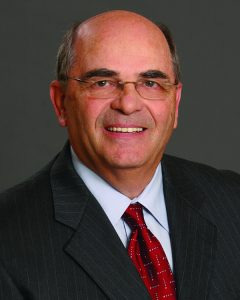November/December 2020 issue Thought Leaders for MCOL Members
Hank Osowski
Posted: November 2020
![]() [Printable Version]
[Printable Version]
What key healthcare business trend(s) for 2021 are you most concerned about stakeholder preparedness for, beyond continued efforts to contain the pandemic and deployment of vaccines?
Calendar year 2020 is certainly a forgettable year. The COVID worldwide pandemic, a chaotic political environment, civil unrest, closed businesses and higher unemployment as well as travel restrictions and new rules for living have all placed tremendous pressure on businesses and families. Anxiety and uncertainty are the hallmarks of this most harrowing year. And throughout all of this, our colleagues in the healthcare space have been on the front lines of efforts to contain the spread and treat the millions who have become ill from this virus.
If there is one characteristic that has best defined healthcare in 2020 it is disruption. Everywhere we look no sector of our industry has been untouched. Hospitals and health systems may have been the most highly impacted and certainly the most visible. New emergency care protocols were required, entire units needed to be converted to deal with the reality of a highly contagious disease and safeguard to protect their most valuable resource, the physicians, nurses and support staff who were indispensable. Primary care and specialty physicians needed to pivot how they practice by limiting in person visits in favor of telehealth virtual visits. And this doesn’t even begin to address challenges and difficulties of the other highly impacted healthcare sectors such as skilled nursing facilities, home health agencies and others.
Though there are many areas where rapid disruption is transforming healthcare sectors and marketplaces, two standout as particularly transformative. First is a new work dynamic that is fundamentally changing how and where we conduct business and provide services in an uncertain and quickly changing ecosystem. For leadership and staff this includes finding new means of collaborating in a disconnected and remote environment. Physicians and nurses have needed to develop new care protocols for treating the conditions of this virus on the fly, and to do so under pressure of an increasingly fragile patient population. In several healthcare sectors, the challenges of workforce shortages effected many clinical disciplines (nurses, pharmacists, therapists, etc.) as well as countless support areas. Long after the current pandemic has subsided, these shortages are bound to continue given the aging demographics of our population and the increased penetration of retailers in the healthcare space. If they have not already done so, hospitals and traditional healthcare providers will need to realize that they are competing for labor not just with other hospitals and clinics but with the corner supermarket and big box retailers which also need pharmacists, physicians, nurse practitioners and clinical technicians too.
A second area of disruption impacting our industry is the cloud of uncertainty hanging on the possible opinion options for the Supreme Court’s consideration of the constitutionality of the Affordable Care Act “ACA”). In a country divided over so many issues, the ACA has been a matter that has triggered many deeply held beliefs and disagreements since its inception. Now the Supreme Court is considering the question of whether Congress’ 2017 action, to zero out the tax penalty in the individual mandate to buy health insurance, causes the entire ACA to be unconstitutional as ruled by a Texas Federal District Court judge and upheld by U.S. Court of Appeals for the 5th Circuit. The breadth of the ACA ultimately impacts all sectors of the health care industry with far reaching consequences. Whatever might be one’s opinion of the law, the ACA implications for Medicare’s innovation programs, Medicaid expansion and employer-sponsored health insurance could be profound. Individual marketplaces has resulted in healthcare coverage for more than twenty million Americans who were previously uninsured. If ruled unconstitutional, the residual impact will have a devastating and disturbing effect on hospitals, physicians, other providers of care and health plans, not to mention the loss of coverage by individual enrollees. A final ruling may not be known until late Spring early Summer of 2021, but in the meantime, we are left to plan in a cloud of uncertainty. Speculation by “legal experts” based on oral arguments held on November 10, suggests that the Court will find a way to sever the potentially unconstitutional provision from the remainder of the ACA thereby keeping the other major provisions of the Act alive. This would be a positive outcome, but it is far from certain.
Though often perceived as a negative, if channeled appropriately disruption, can be a significant motivator for positive change. I, for one, am encouraged by the commitments that have been made by all sectors of the healthcare industry to press forward during a period when it may have been easier to just give up.

Henry Osowski
Managing Partner, Strategic Health Group
Burbank, CA
